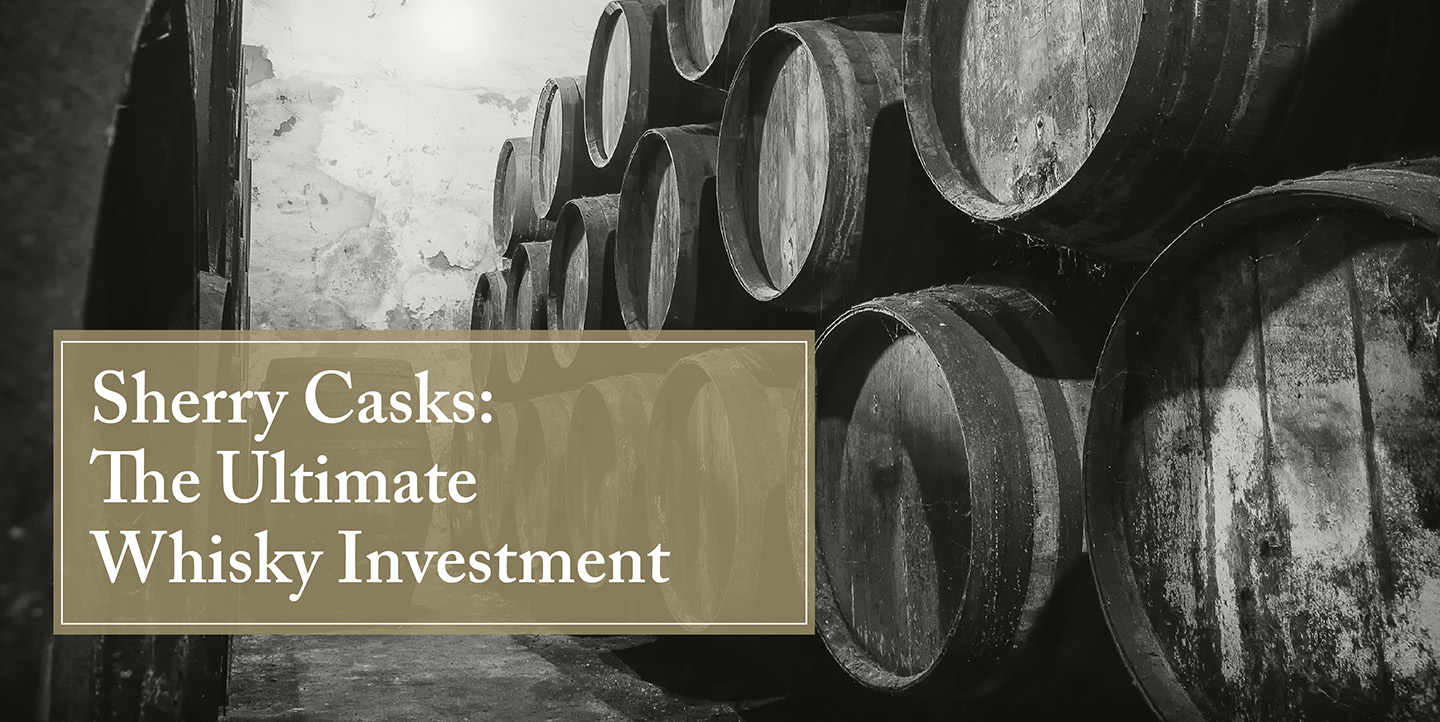Whisky cask investors tend to follow a golden rule when seeking out the rarest and most valuable casks: invest in sherry. Whisky matured in ex-sherry casks acquires rich and complex flavours: a distinctive ‘sherried’ character defined by notes of dried fruit, raisins and spices. In short, sherry casks make amazing whisky, and that comes with a significant premium when the time comes to start building a portfolio of casks.
But how did ex-sherry become the cask of choice for making the finest whiskies?
From the vineyards of Andalusia to the Highlands of Scotland
For centuries, Jerez from Spain was a favourite tipple for the Scots. The first record of it being drunk in Edinburgh was in 1548 and, by the 18th Century, sherry had become the drink of choice in the fashionable Scottish clubs of the age. In the 1800s, Scottish merchants were heavily involved in the sherry industry, with some famous brands like Sandeman’s and Bodegas Gordon, still bearing the names of industrious Scots to this day.
Casks of sherry were arriving from Spain to the ports of Glasgow and Leith in massive numbers. At the same time, the whisky industry was expanding dramatically, leading to an ever-growing need for oak casks. Inevitably, the distillers turned to those sherry casks being landed on the docks.
Once the sherry had been bottled, the empty casks offered a convenient solution for the whisky makers. What they could never have imagined, however, was the effect it would have on the taste and quality of their whisky. Soon whisky matured in sherry casks became the ultimate expression of a Scotch single malt.
Recycled is replaced by new make
As the importation of oak casks dried up towards the beginning of the 20th Century, the distilleries were left with a conundrum: how could they continue to create their sherry flavoured whisky without having imported sherry casks to recycle?
The answer for the distilleries was to start manufacturing and seasoning their own casks. Distilleries began to work with cooperages in Jerez to make new casks to their specifications, using air-dried European oak, seasoned with sherry, imitating the shipping casks they once used for their spirits.
Today, big spirits companies like Edrington (owner of The Macallan and Highland Park brands) make their own casks, fill them with Fino or Oloroso in Spain and then take them to Scotland to mature their single malts.
Finishing or Maturing?
A rare single malt from a prestigious distillery, matured over time in a sherry seasoned cask is a hot property for investors, destined to significantly increase in value with every year it sits in the cask.
But there is another option open to investors who want to push up the value of their casks by adding the influence of sherry: re-racking. First the whisky is matured in normal oak casks until its immaturity has reduced and it has taken on a basic aroma for up to 10 years. Then the whisky is placed into a sherry cask for ‘finishing’. After 1 to 2 years in a new, ‘first-fill’ sherry cask the whisky takes on many of the sherry characteristics and, consequently, becomes a more valuable asset for the investor.
Seasoning with flavour
A first-fill European oak ex-Sherry cask will have more notes of clove, resin and dried fruit. The same cask filled for a second time will have less of those compounds available for the whisky. Some ex-Sherry casks have been refilled so many times that the ‘Sherry’ element is almost non-existent. That’s why first-fill sherry casks are particularly sought-after by investors.
When the sherry combines with the oak in a younger whisky, sherry flavours are more prevalent, while older whisky provides more oak notes. Therefore, a sherry-finished whisky (previously matured in a non-sherry seasoned cask) has more of a wine-driven character, compared to a whisky matured exclusively in ex-Sherry casks, which has deeper, more tannin-based notes.
Time to re-rack your cask?
When selecting a cask for investment, a number of different factors need to be taken into account, including the reputation of the distillery it comes from and its age. But the type of cask can also be one of the most important factors, with sherry-seasoned casks consistently fetching the highest prices on the market. However, finding first-fill sherry casks can be difficult as investors quickly snap up the rarest casks as soon as they appear.
By re-racking, investors can improve the quality of their whisky and enhance the value of their casks, giving it that delicious sherry finish—even if they missed the opportunity to purchase a sherry cask the first time around.
Want to learn more? Click here for our whisky cask investment guide.

